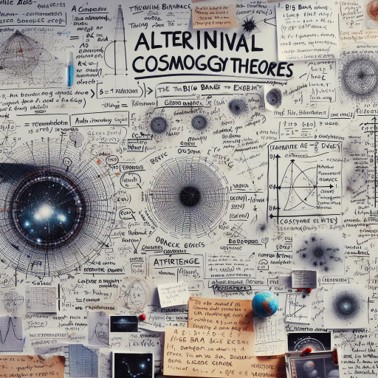Alternative Cosmology: ΛCDM-Like Predictions Today
Cosmology
DOI:
https://doi.org/10.55672/hij2023pp24-30Keywords:
Cosmology, double universe theory, dark energy, Hubble constant, , Planck, quantum mechanicsAbstract
The theory of quantum mechanics and the theory of general relativity are both important with respect to the initial conditions of the universe and its evolution. In this paper, we consider the question of how these theories might interrelate through a simple and didactic cosmological alternative model based on the Hubble time, Planck mass flow rate, and a variable coefficient αH. In doing so, we derive the parameters obtained by the Planck 2018 results using the Planck mass flow rate and Hubble time. By introducing a double universe theory (matter and antimatter universes arising from an initial instanton (i.e., half Planck mass) state, we sketch out a general framework for unifying, in the cosmology, general relativity with quantum field theory.
Downloads
References
J. S. Bullock, M. J. A. R. o. A. Boylan-Kolchin, and Astrophysics, "Small-scale challenges to the Λ CDM paradigm," vol. 55, pp. 343-387, 2017.
C. Pittordis, "Model-Independent Probes of Cosmology & Gravitation," Queen Mary University of London, 2019.
J. Hamann, S. Hannestad, J. Lesgourgues, C. Rampf, Y. Y. J. J. o. C. Wong, and A. Physics, "Cosmological parameters from large scale structure-geometric versus shape information," vol. 2010, no. 07, p. 022, 2010.
S. Kumar, R. C. Nunes, and S. K. J. M. N. o. t. R. A. S. Yadav, "Testing the warmness of dark matter," vol. 490, no. 1, pp. 1406-1414, 2019.
G. J. S. i. t. h. o. g. r. Gorelik, "The first steps of quantum gravity and the Planck values," vol. 3, pp. 364-79, 1992.
D. S. Blanco, L. J. C. Lombriser, and Q. Gravity, "Exploring the self-tuning of the cosmological constant from Planck mass variation," vol. 38, no. 23, p. 235003
N. Aghanim et al., "Planck 2018 results-VI. Cosmological parameters," vol. 641, p. A6, 2020.
P. Collaboration et al., "Planck 2018 results. VI. Cosmological parameters," 2020.
E. T. J. J. o. M. P. Tatum, "How the Dirac Sea Idea May Apply to a Spatially-Flat Universe Model (A Brief Review)," vol. 10, no. 08, p. 974, 2019.
J. D. Barrow and G. W. J. M. N. o. t. R. A. S. Gibbons, "Maximum tension: with and without a cosmological constant," vol. 446, ed, 2015, pp. 3874-3877.
E. T. Tatum, U. Seshavatharam, S. J. I. j. o. A. Lakshminarayana, and Astrophysics, "The basics of flat space cosmology," vol. 5, no. 02, p. 116, 2015.
E. Mamajek et al., "IAU 2015 Resolution B2 on Recommended Zero Points for the Absolute and Apparent Bolometric Magnitude Scales," 2015.
L. J. P. L. B. Lombriser, "On the cosmological constant problem," vol. 797, p. 134804, 2019.
E. Haug and S. Wojnow, "How to predict the temperature of the CMB directly using the Hubble parameter and the Planck scale using the Stefan-Boltzman law," 2023.
D. J. T. A. J. Fixsen, "The temperature of the cosmic microwave background," vol. 707, no. 2, p. 916, 2009.
E. Tatum, E. G. Haug, and S. Wojonow, "High precision Hubble constant determinations based upon a new theoretical relationship between CMB temperature and H0," 2023.
B. V. Bento and S. J. a. p. a. Zalel, "If time had no beginning," 2021.
E. T. Tatum and U. J. J. o. M. P. Seshavatharam, "Flat space cosmology as a model of light speed cosmic expansion—Implications for the vacuum energy density," vol. 9, no. 10, pp. 2008-2020, 2018.

Published
How to Cite
Issue
Section
License
Copyright (c) 2023 Hyperscience International Journal

This work is licensed under a Creative Commons Attribution-NonCommercial 4.0 International License.






 Google Scholar
Google Scholar  Crossref
Crossref  Scopus
Scopus  WorldCat
WorldCat  ORCID
ORCID  Scilit
Scilit  Mendeley
Mendeley  Internet Archive
Internet Archive 





